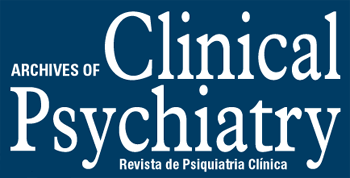Resumo em Português:
CONTEXTO: A doença de Alzheimer de início tardio (DAIT) representa a maior parte dos casos de doença de Alzheimer (DA). OBJETIVO: Revisar resultados relevantes para genes candidatos e de suscetibilidade para a DAIT. MÉTODOS: Revisão bibliográfica, a partir de 1990, empregando os bancos de dados PubMed e SciELO. RESULTADOS: Polimorfismos genéticos são mais relevantes para a DAIT que mutações, sendo que o alelo E*4 do gene APOE é o maior fator de risco conhecido até o momento. No entanto, outros genes vêm sendo investigados e existem dados disponíveis sobre a relação com DAIT para os genes da apolipoproteína CI, alfa-1-antiquimiotripsina, receptor sigma tipo 1, enzima conversora de angiotensina, alfa 2-macroglobulina, proteína relacionada ao receptor de LDL, interleucina 1 alfa e beta, paraoxonase, transportador de serotonina e receptores de serotonina. CONCLUSÕES: A DAIT tem etiologia multifatorial e um grande número de marcadores genéticos influencia em seu desenvolvimento. Essas variantes precisam ser investigadas na população brasileira, cuja formação étnica é distinta daquela de populações norte-americanas e europeias. Somente assim será possível a determinação do perfil genético de risco, que facilitará a detecção de indivíduos com maior probabilidade de desenvolver a doença.
Resumo em Inglês:
BACKGROUND: Late Onset Alzheimer's disease (LOAD) represents the majority of cases of Alzheimer's disease. OBJECTIVES: To review relevant results to candidate and susceptibility genes related to LOAD. METHODS: Bibliographic review, starting from 1990, utilizing PubMed and SciELO data banks. RESULTS: Genetic polymorphisms are more relevant for LOAD than mutations, and E*4 allele of APOE gene is the major risk factor known until now. Neverthless, other genes are being investigated and data are available about the relation with LOAD to the genes coding for apolipoprotein CI, antichymotrypsin, sigma receptor type 1, angiotensin converting enzyme, alfa 2-macroglobulin, LDL receptor related protein, interleucin 1 alfa and beta, paraoxonase, serotonin transporter and serotonin receptors. CONCLUSIONS: LOAD presents multifactorial etiology, and a broad number of genetic markers interferes with its development. They should be further pursued in the Brazilian population, in which ethnic background is distinct from North-american and European populations. Only with this data, a determination of the genetic risk profile will be feasible, and will improve the detection of the individuals at greater probability of developing the disease.
